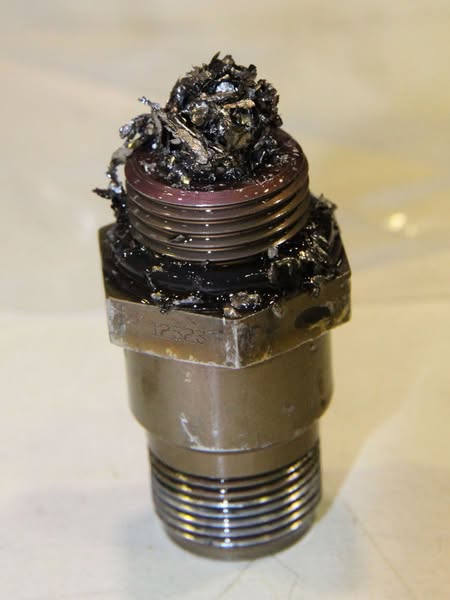

Tucked away inside the labyrinth of engines, gearboxes, and hydraulic systems – particularly in the high-stakes world of aviation – lies a minuscule guardian. It’s not flashy, rarely seen, but its job is critical: catching microscopic killers before they wreak havoc. This unsung hero is the chip detector, a remarkably simple yet profoundly important magnetic sensor that truly saves lives.
More Than Just a Magnet: The Chip Detector’s Crucial Mission
Imagine the complex ballet of metal components inside an aircraft engine, helicopter gearbox, or even critical industrial machinery. Pistons slide, gears mesh, bearings spin – all under immense pressure and friction. Over time, even with perfect lubrication, microscopic wear particles are inevitable. However, excessive wear, a failing bearing, a chipped gear tooth, or a cracked component can generate larger, dangerous metal fragments circulating in the vital oil system.
This is where the chip detector earns its keep. Its design is elegantly simple:
- The Magnet: At its core is a powerful permanent magnet.
- The Housing: This magnet is encased within a threaded plug or cartridge designed to be screwed directly into the oil flow path (often on scavenge lines or filters).
- The Circuit: Electrical contacts run through the housing, connected to a warning system (usually in the cockpit or control room).
How It Works: Turning Metal into a Message
- Capture: As oil laden with metal particles flows past or over the detector, the powerful magnet attracts and captures ferrous particles (iron, steel). Think of it as a microscopic fishing net specifically for magnetic debris.
- Accumulation: Over time, these captured particles build up, forming a conductive “bridge” between the electrical contacts inside the detector.
- Warning: Once enough particles accumulate to complete the circuit, an electrical signal is sent. This triggers a “Chip Detected”, “Metal in Oil”, or similar illuminated warning light/indicator on the instrument panel. It’s a clear, unambiguous signal: “Stop! Something inside is shedding metal!”
Why This Tiny Device is a Lifesaver:
- Early Detection is Paramount: The chip detector provides the earliest possible warning of abnormal wear or incipient failure. It catches problems long before they cause noticeable vibration, performance loss, or catastrophic damage. This early warning is often the difference between a scheduled inspection and an in-flight emergency.
- Preventing Catastrophic Failure: A single liberated piece of metal circulating in an engine or gearbox can act like a bullet. It can score bearing surfaces, jam gears, rupture oil lines, or cause secondary failures leading to sudden, catastrophic seizure or fire. The chip detector intercepts these fragments before they cause this domino effect.
- Enabling Proactive Maintenance: The warning light doesn’t just say “problem”; it says “investigate now.” Maintenance crews can safely land the aircraft or shut down the machinery. They then remove the chip detector plug, inspect the type, size, and quantity of metal captured (often using specialized microscopes), and pinpoint the likely source. This allows for targeted repairs – replacing a single bearing or gear before it fails completely and destroys the entire assembly.
- The Aviation Imperative: In aviation, where failure has zero margin for error, chip detectors are mandatory safety equipment on turbine engines, transmissions, and auxiliary power units (APUs). They are a cornerstone of Condition Monitoring and Predictive Maintenance programs, directly contributing to aviation’s exceptional safety record. A glowing “Chip Detected” light is taken with the utmost seriousness by every pilot and engineer.
- Beyond Aviation: While critical in aerospace, chip detectors are also vital in marine engines, power generation turbines, heavy industrial machinery, and high-performance racing engines – anywhere unexpected metal loss signals impending disaster.
The Evidence is in the Debris: What Chip Detectors Reveal
Inspecting the captured particles is forensic engineering:
- Fine “Fuzz”: Typically indicates normal, expected wear.
- Fine Flakes: Can indicate early stages of abnormal wear or corrosion.
- Chunky Chips or Slivers: A major red flag! Points to significant component damage like gear tooth breakage, bearing cage failure, or piston ring damage.
- Non-Ferrous Particles (Aluminum, Copper): While the standard magnet only catches ferrous metals, finding non-ferrous particles during inspection (washed out with the ferrous ones) is a critical clue. It often points to failing bearings (copper cages), aluminum housings, or other non-magnetic components breaking down. Specialized detectors exist for non-ferrous metals but are less common.
A Legacy of Safety: Small Part, Monumental Impact
The chip detector exemplifies engineering brilliance through simplicity. It leverages fundamental physics – magnetism – to provide an invaluable, real-time health check on some of the most complex and critical machinery humans operate. It transforms invisible, internal threats into a clear, actionable warning light.
By catching the tiniest harbingers of failure, this unassuming magnetic plug performs a monumental task: it prevents minor wear from escalating into catastrophic events, protects multi-million dollar assets, and, most importantly, safeguards the lives of those who depend on the machinery it monitors. It’s a potent reminder that sometimes, the smallest components hold the greatest responsibility for safety.
Have You Seen One? Share Your Stories!
Maintenance Crews, Engineers, Pilots: We want to hear from you!
- What’s the most dramatic “Chip Detected” warning you’ve encountered? What was the root cause (a failing bearing, gear tooth, something else)?
- Ever had a chip detector warning prevent a potential disaster? Tell us the story!
- Any interesting or unusual debris you’ve found on a chip detector plug?
Drop your experiences and insights in the comments below! 👇 Let’s celebrate this tiny but mighty guardian of machinery and safety.
Leave a Reply